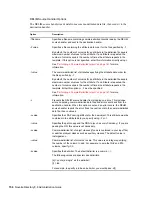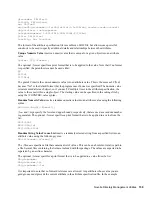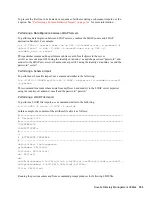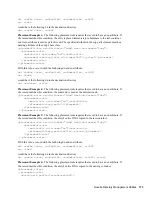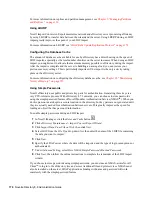
162
Novell eDirectory 8.8 Administration Guide
no
vd
ocx
(e
n)
6 Ap
ril 20
07
The information in
order.csv
could be input directly using the -t option.
The data is then sent to the LDAP server server1.acme.com at port 389 using the identity
cn=admin,c=us, and password “secret”.
This example specifies that cn should become the new DN for this object using the -n option, and
this object was added to the organization container acme using the -l option.
Comma-delimited files generated using Novell Import Conversion Export utility have the template
used for generating them in the first line. To specify that first line in the delimited file is the
template, use the -k option. If -F or -t is used with -k, the template specified should be consistent
with that in the delimited file .i.e, both should have exactly the same attributes. However, the
number of occurences and the order of appearance of each attribute can differ. In the above example,
in.csv
contains
dn,cn,title,title,title,sn
in the first line. The following templates are consistent and
can be used with -t or -F when -k is used:
dn,cn,title,sn
(number of repetitions of attribute title differs)
dn,sn,title,cn
(order of attributes differ)
However, the following are not consistent with the template in
in.csv
and hence cannot be
specified with -t or -F when -k is used:
dn,cn,title,sn,objectclass
(new attribute objectclass)
dn,cn,title
(missing attribute sn)
Performing a Comma-Delimited Export
To perform a comma-delimited export, use a command similar to the following:
ice -S LDAP -s server1.acme.com -p 389 -d cn=admin,c=us -w password -l
objectClass=* -c sub -D DELIM -f /tmp/server1.csv -F order.csv
This command line performs a subtree search for all objects in the server server1.acme.com at port
389 using the identity cn=admin,c=us and the password “password” and outputs the data in comma-
delimited format to the
/tmp/server1.csv
file.
If any attribute in the
order.csv
has multiple values,
/tmp/server1.csv
, the number of
columns for this attribute equals maximum number of values for the attribute. If an attribute repeats
in
order.csv
, the number of columns for this attribute equals the number of times the attribute
repeats. For example, if
order.csv
contains
dn,sn,objectclass
and objectclass has 4 values, whereas
dn
and
sn
have only 1 value for all
the entries exported,
dn
and
sn
would have 1 column each, whereas objectclass would have 4
columns. If however, we want only 2 values for objectclass to be output to the delimited file,
order.csv
should contain
dn,sn,objectclass,objectclass.
In both cases the attributes are written to the
/tmp/server1.csv
in the first line. In the first case
/tmp/server1.csv
would have
dn,sn,objectclass,objectclass,objectclass,objectclasss
in the first line of
/tmp/server1.csv
and in the second case it would have
dn,sn,objectclass,objectclass.
Summary of Contents for EDIRECTORY 8.8 SP2
Page 4: ...novdocx en 6 April 2007...
Page 116: ...116 Novell eDirectory 8 8 Administration Guide novdocx en 6 April 2007...
Page 128: ...128 Novell eDirectory 8 8 Administration Guide novdocx en 6 April 2007...
Page 255: ...256 Novell eDirectory 8 8 Administration Guide novdocx en 6 April 2007...
Page 406: ...408 Novell eDirectory 8 8 Administration Guide novdocx en 6 April 2007...
Page 563: ...566 Novell eDirectory 8 8 Administration Guide novdocx en 6 April 2007...
Page 573: ...576 Novell eDirectory 8 8 Administration Guide novdocx en 6 April 2007...
Page 601: ...604 Novell eDirectory 8 8 Administration Guide novdocx en 6 April 2007...









